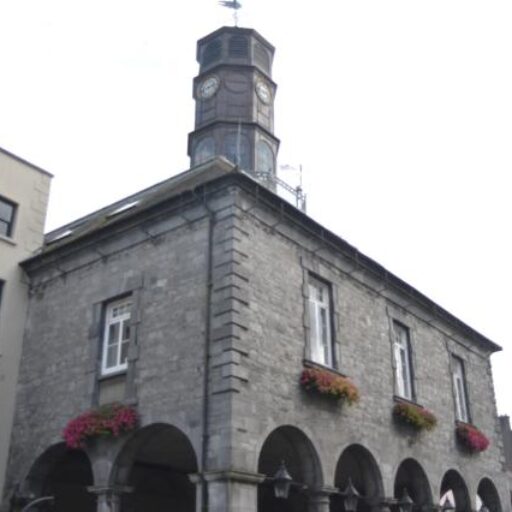
2024 General Election – Dark clouds looming!
2024 General Election – Dark clouds looming!
Now that the general election is over, and the bargaining is in full swing, I think it’s time for a post-mortem examination.
If you were to take a quick look at what happened in the general election, you would think that the people of the country are quite happy. The main parties in government – Fianna Fáil and Fine Gael – were not thrown out, but they won more seats in the 2024 general election – 86, than in the 2020 general election – 73. It will be easier for them to reach 88 seats this time and form a coalition.
Vote of Confidence?
Is it a vote of confidence in the current government? That is the big question, in my opinion. To discuss it, it is necessary to look behind the results.
Firstly, only 59.7% of the electorate in the country voted, one of the lowest percentages ever. This is not a good sign, as it reflects the dissatisfaction of those who are not involved in the process. When that percentage is falling, as it has been in this case, it would appear that democracy is deteriorating, and people have less confidence in that system.
Secondly, the electorate had no choice but to return Fianna Fáil and Fine Gael to power. Incidentally, the Green Party was a scapegoat and Fianna Fáil and Fine Gael blamed them for any harsh criticism the current government received – especially regarding the government’s green policies, even though they were obliged by the European Union to implement them. The Greens lost 11 seats in the general election, and as part of that defeat, the Minister for Tourism, Culture, Arts, Gaeltacht, Sport and Media, Catherine Martin TD, lost her seat and her Ministry. Any minor party will be afraid to enter a coalition with Fianna Fáil and Fine Gael from now on!
Although you would have thought that Sinn Féin would be in the running this time, they lost support for the first time in 35 years. They certainly made a few mistakes. And they were slow to recognise that a large proportion of their supporters was not happy with Sinn Féin’s stance on immigration. They lost support from people who had a negative view of immigration, and who wanted strong immigration policies in place, to limit the number of immigrants coming into the country. Some of these seem to have moved towards right-wing parties – Aontú or Independent Ireland, for example. In any case, Sinn Féin is not in a position to form a coalition, mainly because it is unlikely that Fianna Fáil or Fine Gael would join them in coalition. So, it is clear that Fianna Fáil and Fine Gael have not received any kind of mandate from the Irish people, and that they will remain in power despite the important problems that they have not yet resolved, after one or both of them have been in power for a long time. There are major crises and Fianna Fáil and Fine Gael are still talking about them and saying what they will do – but there is not much progress to be seen, in reality. I am talking basically about housing, homelessness and health issues, not to mention immigration issues. The government cannot be excused for its inaction on these ongoing crises that have not been resolved for more than a decade. We are a wealthy country, with a trade surplus for years, not to mention the windfall tax (€13 billion) from Apple that is due to hit the exchequer soon. It is hard to imagine that people would be happy with Fianna Fáil or Fine Gael, given their terrible political record.
Against the grain
It is clear that the majority of people around the world are not happy with their democratic governments. In 2024, most parties in power were weakened or ousted. This happened in America, Britain, France, Germany, Italy, Austria, Sweden, Finland, Greece, Argentina, Ecuador, Japan and South Africa. But this did not happen in Ireland, and it is an exception. As I said earlier, people did not have a viable alternative, in contrast to the countries mentioned above. In those countries, people were able to express their discontent politically, because there were other strong parties available to them as options. This is not yet the case in Ireland, but it is not difficult to imagine the emergence of a charismatic leader who would be able to speak directly to those who feel they have no input into the political process. That person would likely be on the right wing, with a vision very different from the parties in power. If that happens, and if such a person and his party win a mandate in the country’s general election, it is likely that a restructuring of government would follow. Without a doubt, democracy as we know it would be in trouble in that case. Look, for example, at what is happening in the United States, which was the world’s beacon of democracy until 2016. With Trump as President of America, it will be difficult for the country to save democracy. And we all know how the dictator’s story ends!
Recommendations
It is not over until the fat lady sings, and we still have a chance in Ireland to avoid an oppressive government. Members of government need to go out into their constituencies among their constituents, and they need to listen to them about the problems they have that the government could solve. Then, they need to formulate policies to address those problems and deliver on what they say. It is high time for the government to be proactive, and they already know about the important ongoing problems that still exist and are getting worse. It is vital that we as voters put pressure on our TDs to deliver on their promises, as our representatives must be held accountable to us.
If the government does not change its approach and implement its policies without delay, as well as addressing any other issues facing its constituents, it is likely that they will be out of a job after the next election. Unfortunately, such incompetence would be a major opportunity for the right wing to attract voters in their direction, and this must be avoided at all costs.







